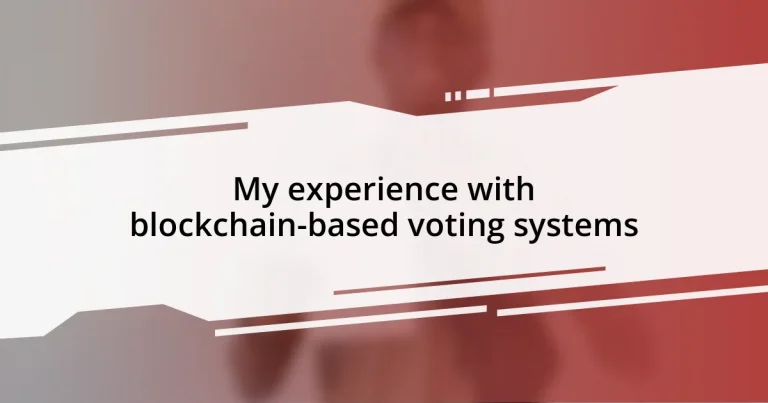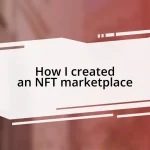Key takeaways:
- Blockchain enhances election transparency and security, enabling voters to verify their votes and ensuring records can’t be altered.
- Challenges include the digital divide affecting accessibility, the need for user education, and potential cybersecurity threats.
- Future trends may involve biometric authentication, decentralized governance, and real-time voter feedback to strengthen democratic engagement.
- Overall, blockchain voting could transform the perception of agency in governance, fostering trust and increased participation.
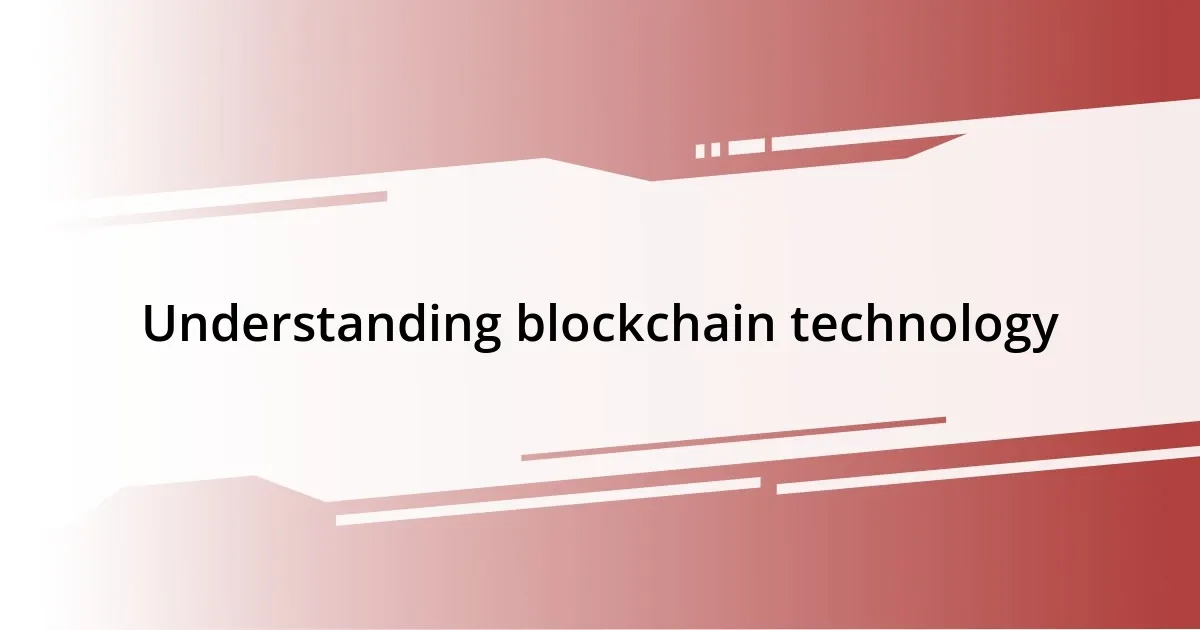
Understanding blockchain technology
Blockchain technology, at its core, is a decentralized ledger system that records transactions across multiple computers. I remember the first time I grasped how this meant that no single entity could control the data, and that feeling of empowerment was almost tangible. It’s fascinating to think about how this decentralization can enhance transparency and security, right?
Each block in the chain contains a list of transactions, and once a block is filled, it’s linked to the previous one, creating an unchangeable record. This permanence is what makes blockchain so compelling for applications like voting systems. Have you ever wondered how it would feel to cast your vote knowing it couldn’t be tampered with? I found that thought reassuring as I dove deeper into the implications of using this technology.
Additionally, consensus mechanisms, such as Proof of Work or Proof of Stake, ensure that all participants agree on the validity of transactions before they’re added to the ledger. It’s almost like a digital handshake that says, “We all see the same truth.” Reflecting on this, I realized how this collaborative verification process could potentially revolutionize our trust in digital systems, especially in something as vital as voting.
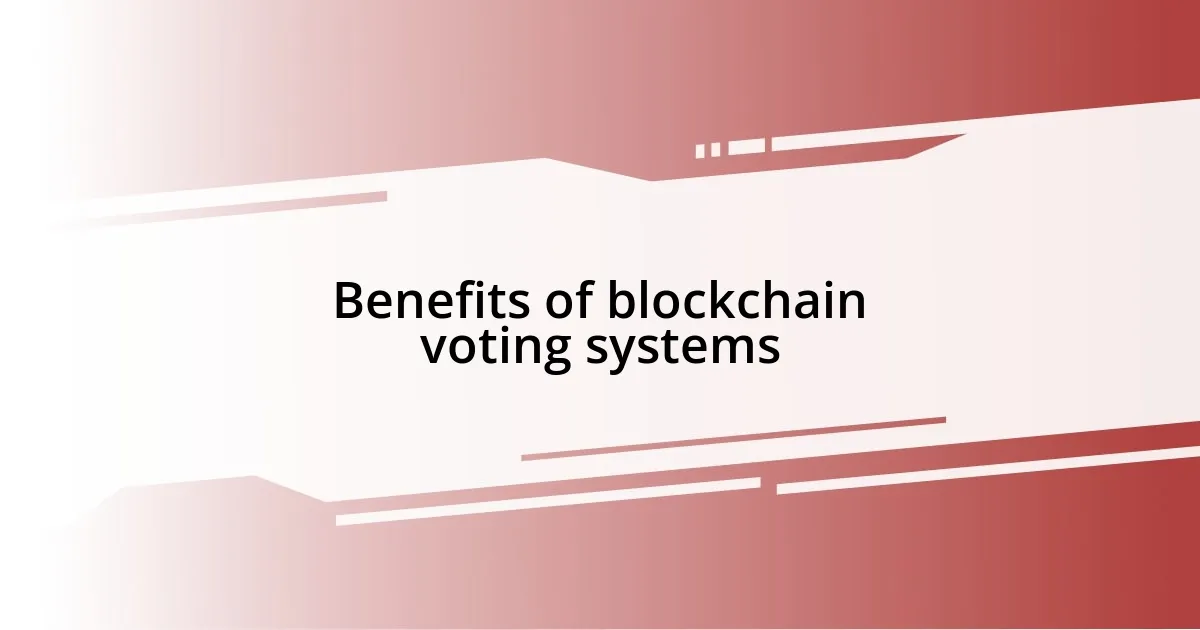
Benefits of blockchain voting systems
One of the most compelling benefits of blockchain-based voting systems is the transparency they offer. When I first heard about the idea of a completely transparent voting process, I felt this wave of hope wash over me. Imagine a system where every vote is publicly recorded on a ledger that anyone can view. This not only fosters trust among voters but also allows for real-time auditing, which I’m convinced could significantly reduce any doubts about election integrity.
- Enhanced security: Votes are cryptographically secured, making it nearly impossible to alter them without detection.
- Increased accessibility: Voters can participate from anywhere, even remotely, which may lead to higher voter turnout.
- Immutable records: Once a vote is cast, it becomes part of the permanent record, ensuring that no alterations can occur.
- Lower costs: Reducing the need for physical polling places and staff may decrease the overall cost of elections.
Moreover, the ability to verify one’s vote down the line is simply empowering. I think about the weight of knowing that my voice is not only heard but also permanently documented in a way that can’t be erased or changed. That sense of security can make someone, like me, feel more engaged and motivated to participate in the democratic process. It transforms voting from a mere act of casting a ballot to a profound expression of one’s beliefs and values. This is truly a game-changer in how we perceive our agency in governance.
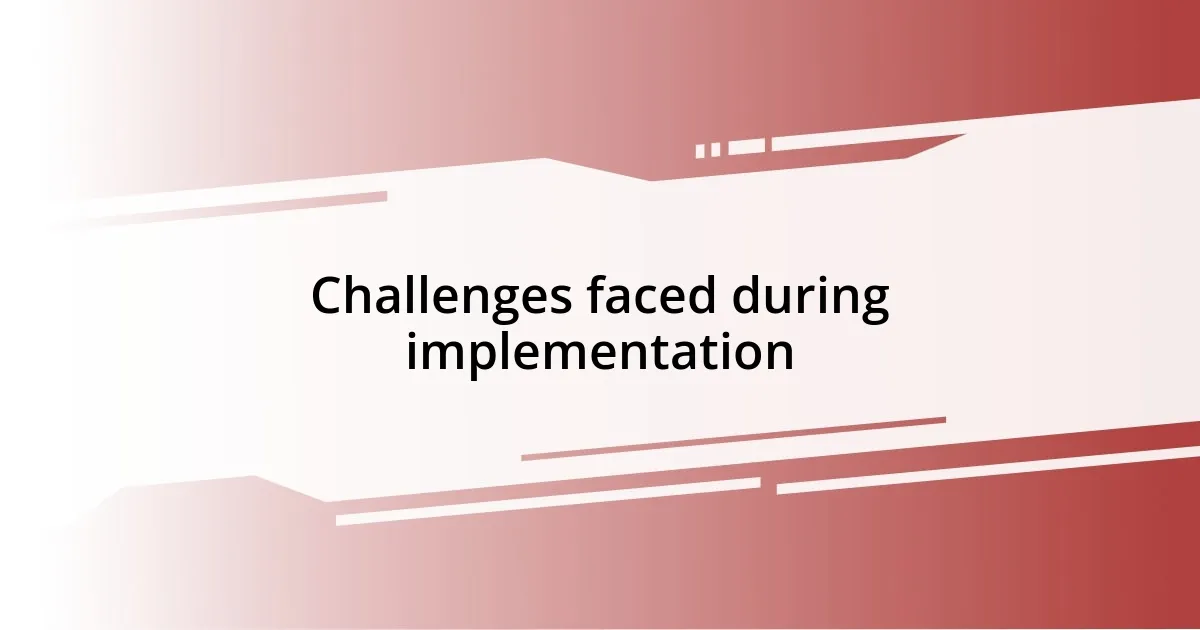
Challenges faced during implementation
Implementing blockchain-based voting systems is not without its challenges. One major hurdle I’ve encountered is the digital divide. While blockchain promises accessibility, it’s crucial to acknowledge that not everyone has the same access to technology or the internet. I often think of elders in my community who may struggle with digital voting tools—how can we ensure they feel included in the democratic process? It’s a pressing concern that needs thoughtful solutions.
Another challenge is user education. When I first learned about blockchain voting, I had a steep learning curve. Many voters might feel overwhelmed by the technology and the concept itself. It’s not just about casting a vote; it’s about understanding how their votes are recorded and secured. I remember chatting with friends who found the idea of a digital vote daunting. This highlights the necessity for comprehensive educational initiatives to demystify the technology for everyone.
Additionally, security concerns loom large. Despite the robustness of blockchain, the potential for cyberattacks cannot be ignored. As someone who has spent time researching this technology, I can’t help but be cautious. What happens if a malicious actor targets the system? It can lead to a loss of trust, which is detrimental to the very essence of democracy. Thus, building a secure and reliable infrastructure is imperative to whatever project we pursue.
| Challenge | Description |
|---|---|
| Digital Divide | Not everyone has access to technology or the internet, particularly among older populations. |
| User Education | Many voters are unfamiliar with blockchain technology, necessitating educational programs to build understanding. |
| Security Concerns | Despite its advantages, blockchain is still susceptible to cyberattacks that can undermine voter trust. |
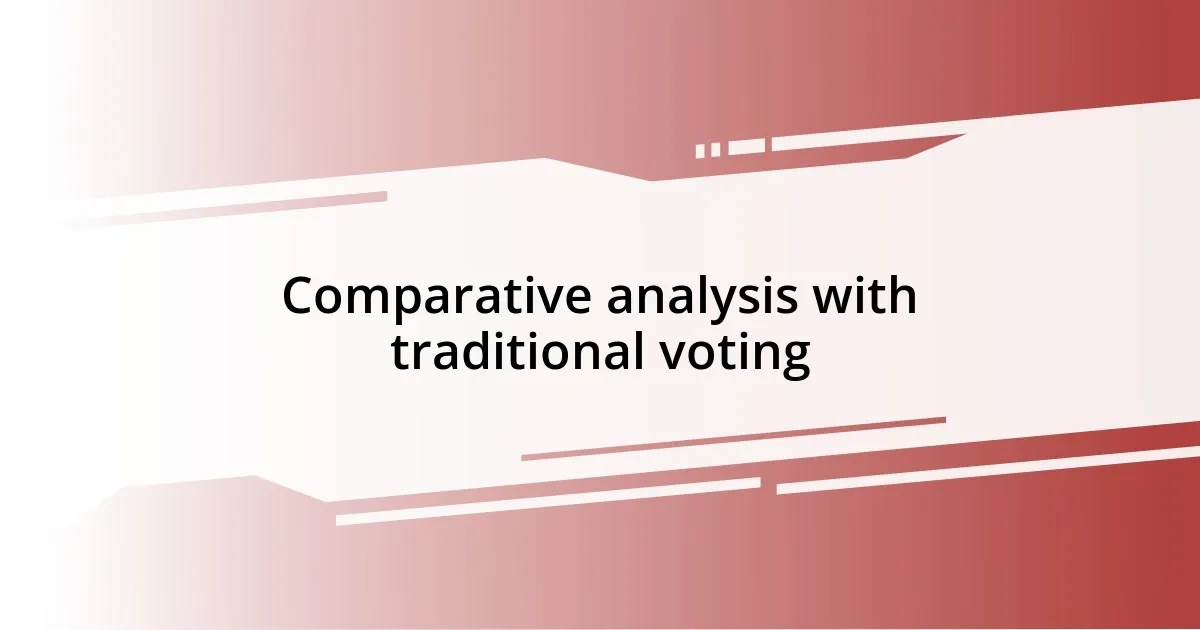
Comparative analysis with traditional voting
When I compare blockchain-based voting to the traditional paper ballot system, the stark differences become evident. With paper ballots, the process often feels clunky and susceptible to human error. I remember waiting in long lines and worrying whether my vote would actually count. This uncertainty can be frustrating. In contrast, blockchain voting offers real-time verification, allowing me to track my vote and confirm it has been recorded. Isn’t it refreshing to know exactly where your voice lands in the democratic process?
Another key aspect is the speed of results. Traditional voting often drags on for days, creating anxiety and suspicion about the final outcome. I can’t count the number of times I’ve anxiously switched on the news, hoping for updates, only to find myself glued to uncertainty. On the other hand, blockchain can significantly expedite the counting process. Imagine waking up the day after an election with a clear picture of how things unfolded. That immediacy not only satisfies curiosity but also solidifies the legitimacy of the electoral process.
While traditional systems are well-established, they also come with risks of manipulation and inaccuracies. The thought of ballots being misplaced or miscounted made me question the entire system. Remembering those concerns makes me appreciate the immutable records that blockchain promises. I find solace in knowing that every vote is locked into a secure ledger, reducing the likelihood of dispute. It makes me wonder—could blockchain be the evolution we need to restore faith in our voting systems? It’s a conversation worth exploring further.
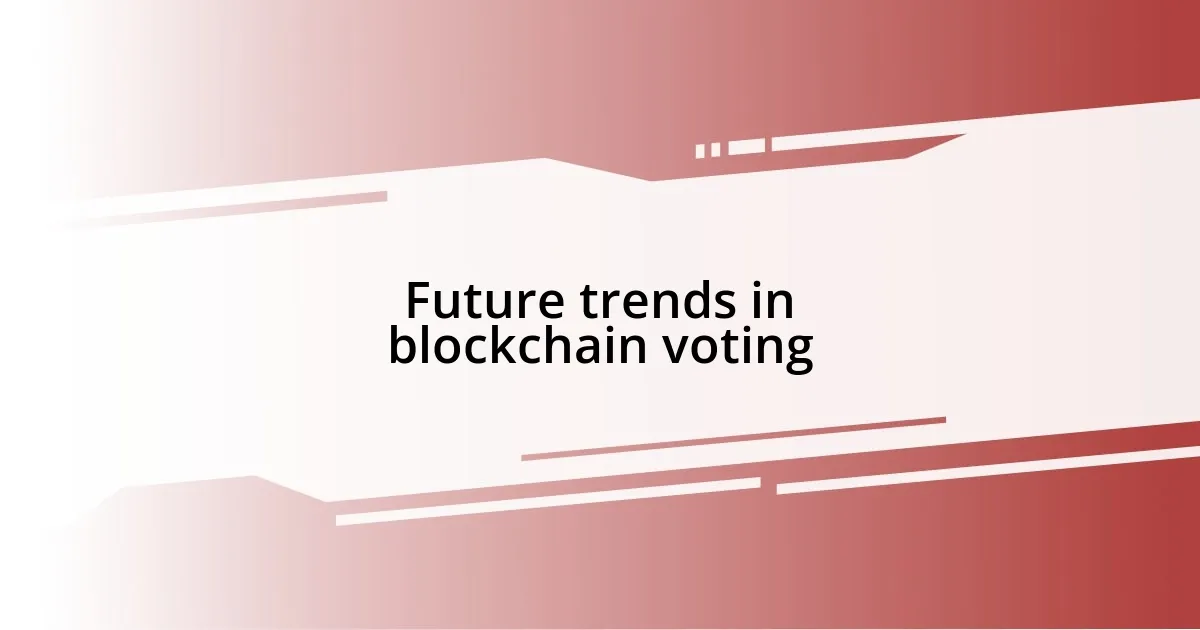
Future trends in blockchain voting
One of the most exciting future trends in blockchain voting is the potential integration of biometric authentication, such as fingerprint or facial recognition. I recall a moment when I struggled to remember my password just to access a voting app. Imagine how seamless it would be to simply verify my identity with my fingerprint! This could significantly enhance security while also making the voting process feel more accessible and personal for users, which is desperately needed.
We may also witness the rise of decentralized autonomous organizations (DAOs) that enable community-driven governance models through blockchain voting. I’ve often thought about how empowering it would feel to participate directly in decision-making rather than relying solely on elected representatives. Engaging citizens in this way could bolster democratic participation and create a sense of ownership over the electoral process.
Lastly, I’m intrigued by the possibility of real-time voter feedback mechanisms. Picture receiving instant updates on how your vote is impacting proposals or initiatives. When I cast my vote, I often wonder about its ripple effects—as if I’m launching a pebble into a pond and watching the ripples unfold. With blockchain, we can potentially transform that curiosity into tangible, transparent processes that keep voters informed and engaged post-election. Isn’t it thrilling to consider how technology can reshape our democratic experiences?
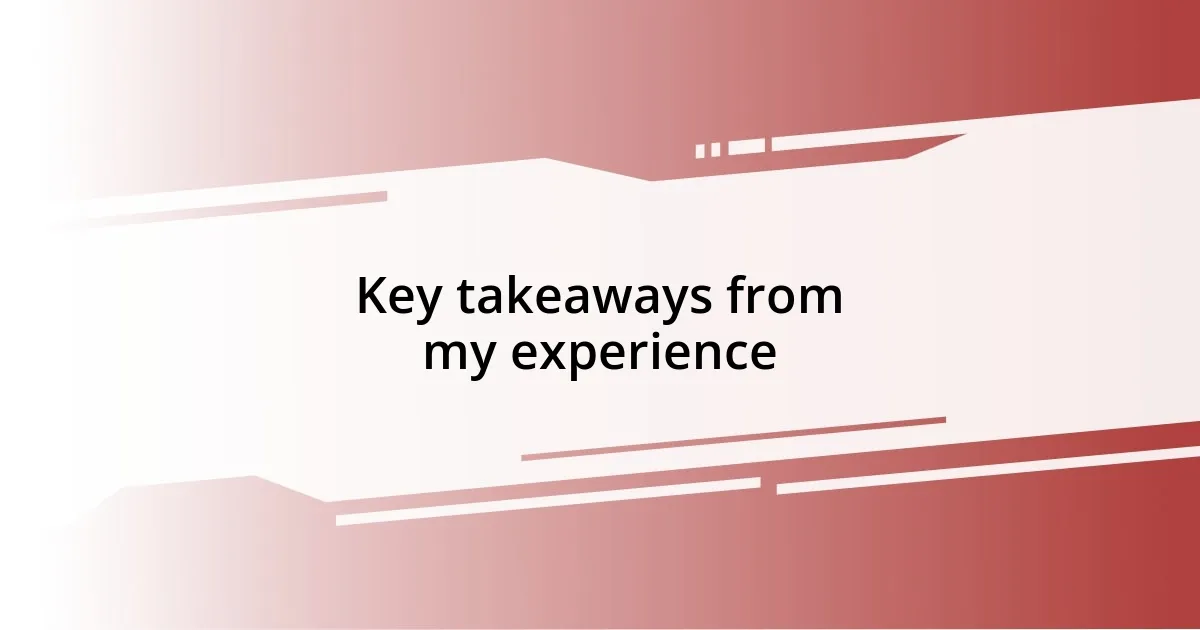
Key takeaways from my experience
Reflecting on my journey with blockchain-based voting systems, one key takeaway stands out: trust. I can’t stress enough how refreshing it was to see a transparent process where I could validate my vote instantly. It evokes a sense of empowerment that the traditional system often lacks. Have you ever felt that gnawing anxiety about whether your vote truly mattered? With blockchain, that anxiety melts away, replaced by a sense of ownership in the electoral process.
Another insight I’ve gathered is the importance of accessibility. I remember the frustration of confusing ballot designs and inadequate assistance at polling stations. Blockchain could distinctively change that narrative. By simplifying the process and making it easier for everyone to participate, including those with disabilities, we can truly democratize voting. How liberating would it be to know that casting your vote is as easy as a few taps on your device?
Also, the potential for community engagement through blockchain is something I find incredibly inspiring. I vividly recall moments during the election season when discussions about candidates felt detached. But with systems that foster direct involvement and feedback, I can see myself being more engaged in local governance. Wouldn’t it be fantastic if we could communicate our preferences more dynamically? This newfound interaction can create a deeper connection between citizens and their representatives, revitalizing a sense of responsibility in the democratic process.












